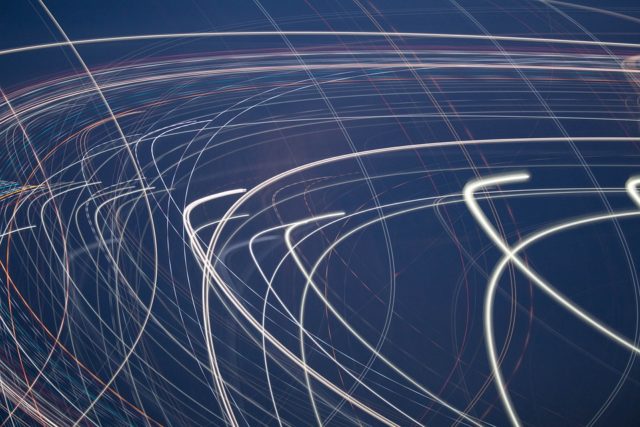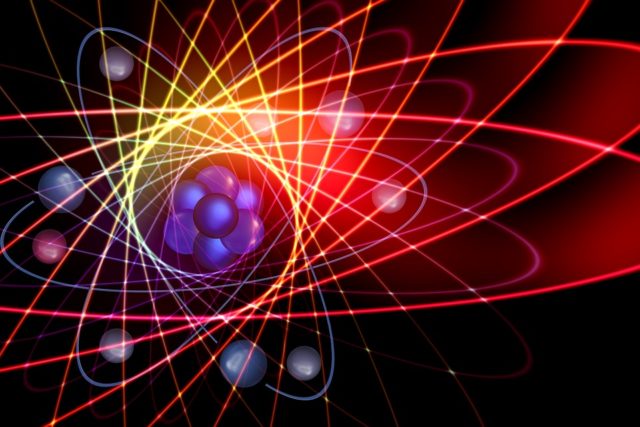The road to quantum gravity (3): The speed of light and the origin of mass

In the previous chapter of this series, we went over the subjective, relative separation of the network of events known as Spacetime into space and time. The speed of light played a major role in the discussion.
In particular, we divided Spacetime into three regions (with respect to a particular event) defined by the existence of causal influence. Interestingly, the boundaries between them are marked by the trajectories of rays of light ending at, or emerging from that event. This is because the boundary is marked by the most extreme way to transmit causal influence, that is, at the fastest speed possible.
A universe without such a cosmic speed limit would have a clear, objective distinction between space and time. This was the logic followed by physicists in the Renaissance era, back when Galileo 1 introduced his Principle of Relativity, which can be summarized as a permanence of the laws of physics, no matter at what speed an observer moves. It was only the modern research into the physics of electromagnetism by Lorentz 2 which observed the existence of this speed limit, thus requiring a modification of Galileo’s laws into Einstein’s Theory of Relativity.
But it gave rise to new questions too:
-
Why would the Universe conspire to keep light from traveling at any speed other than 299,792,458 m/s precisely (according to any observer), no more, no less?
-
And why does it keep anything else from traveling faster?
Besides, what is so special about light? Our arguments were not so much about light itself. Yes, we are talking about physics, so it is natural for physical concepts, such as light, to be involved. But at a fundamental level, we are discussing abstract notions such as causal propagation.
The role of mass
And that is the key to solve this enigma. Both statements above are false.
Let us go back to the basics introduced in Part 1, with the picture of Reality as a network of events related by cause-consequence relations. We can now introduce the speed of causality, as the only speed at which causal influence is propagated.
Of course, seemingly there are cause-consequence relations around us which are communicated slower than the speed of light. To explain how these lower speeds enter into the picture, we introduce the concept of mass.
Intuitively we usually conceive mass as the amount of matter in an object, but more accurately it is the degree to which an object resists being accelerated. We all know that a heavy truck takes longer to accelerate than a Formula-1 car. Following our pragmatic approach, let us see what is actually happening in an object when it manifests this property we call mass.
The photon box
A good place to start is the though experiment proposed by E. Bohr and A. Einstein at the 1930 Solvay conference 3: the photon box.
Imagine a massless box with perfect mirror walls. Impossible, but an analogy for something real that we will explain later. The box is filled with photons, also massless, that bounce around inside the box in all directions. All of the walls of the box feel the same pressure, so there is no overall force on the box.
Now if we give the box a little push, the back wall of the box moves toward the incoming photons. So it feels a little more pressure from their impacts than before. In the meantime, the front of the box is moving away from the incoming photons, and thus feels less pressure. These effects create a net backwards force that feels like a resistance to the change in speed.
As long as acceleration continues, the pressure differential persists.
In this example, acceleration is resisted in a way that feels exactly like mass. In fact, it is indistinguishable from mass because it is mass. The photon box is massive, even though it contains no massive matter at all. Mass resides in the ensemble, while it does not exist in the parts. The equation E = m c2 4 (where c = speed of light) relates the energy transmitted by the photons to the walls and the apparent mass acquired by the overall object.
Another example is a spring. When we push it, it does not start moving instantly. First the rear compresses a bit and then a pressure wave communicates the force to the front until the whole spring is moving. That initial push is harder for the compressed spring than for the relaxed one. It feels like it is more massive, because it is.
It requires effort, and thus energy, to compress a spring. The apparent mass gained is also related to that energy by E = m c2.
Confinement
These different physical effects, the photon box and the compressed spring, both give the same translation between mass and energy. That is because they have the same underlying physical cause: the confinement of interactions (of causal influences) that travel at the speed of light – the photons in the box, and the density wave in the spring, which is ultimately communicated by electromagnetic interactions between the atoms. This is an interaction at the speed of light, even if the resulting wave moves slower.
And as stated above, they are analogies for something real. A proton, for example, is a composite object formed of quarks and gluons. Yet the sum of masses of these elementary particles amounts to only 1% of the mass of the proton. The rest comes from a combination of the photon box and the compressed spring effects: quarks bouncing off the walls created by the binding gluon field, with gluons themselves acting like compressed springs.

Even the elementary particles gain their masses from a type of confinement. In their case, the walls of their box are created by the Higgs field. Long story short, this is a field that is excited into existence around certain elementary particles, with more or less intensity, creating a sort of box around them. Take that away, and they would be massless particles traveling at the speed of light.
In summary, mass arises as a property of the ensemble whenever an object is composed of a combination of
-
Intrinsically massless, light-like particles which are prevented from streaming freely through space.
-
Intrinsically massless fields that confine those particles.
The composite object acquires a resistance to acceleration as a result, and that introduces slower-than-light speeds into the fundamental description of the Spacetime event network. What is special about photons, the particles that compose light, is that they experience no confinement, and thus the described effect does not exist for them.
We leave how the existence of mass affects our perception of the flow of time for the next entry in this series. For now, this is what the concept of mass is all about.
References
- G. Galilei, “Dialogo sopra i due massimi sistemi del mondo” (1632) ↩
- H. Lorentz, “Over de theorie der terugkaatsing en breking van het licht”, PhD thesis at Leiden University (1875) ↩
- A. Einstein, “The principle of conservation of motion of the center of gravity and the inertia of energy”, Ann. Phys. 20, 627-633 (1906) ↩
- A. Einstein, “Ist die Trägheit eines Körpersvon seinem En-ergieinhalt abhängig?”, Ann. Phys. 18, 639-643 (1905) ↩
2 comments
[…] Grabitate kuantikoa ulertzeko argiaren abiadurak zer esan anhi duen eta masaren jatorria zein den ulertu behar da. Daniel Fernándezen The road to quantum gravity (3): The speed of light and the origin of mass […]
Thank you for this beautifully written article. Thank you for the information.